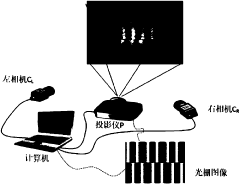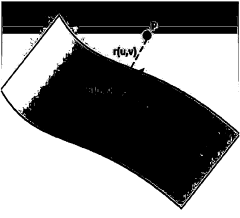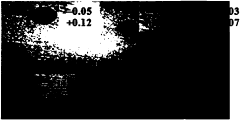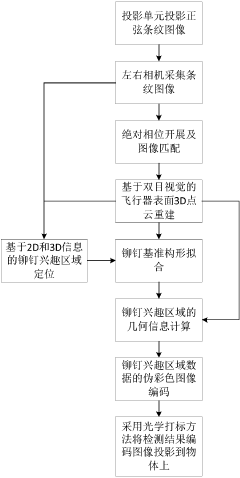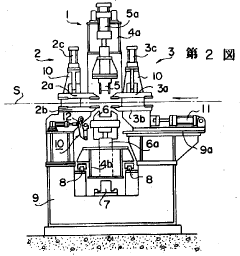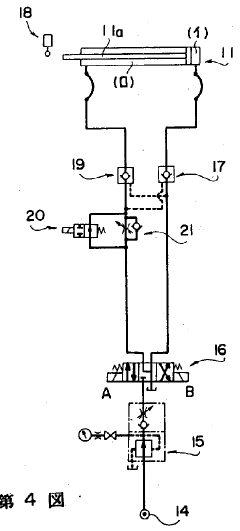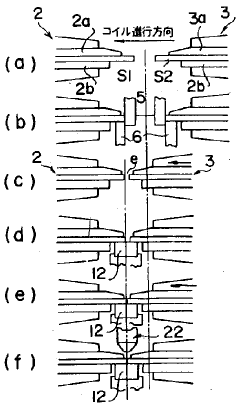Butt Welding in Aerospace: Precision and Performance Standards
MAY 12, 20259 MIN READ
Generate Your Research Report Instantly with AI Agent
Patsnap Eureka helps you evaluate technical feasibility & market potential.
Aerospace Butt Welding Evolution and Objectives
Butt welding in aerospace has evolved significantly over the past decades, driven by the industry's relentless pursuit of precision, reliability, and performance. This welding technique, which involves joining two pieces of metal end-to-end, has become a critical process in the construction of aircraft, spacecraft, and satellites. The evolution of aerospace butt welding can be traced back to the early days of aviation, where rudimentary welding techniques were employed to construct simple aircraft structures. As the aerospace industry advanced, so did the demands on welding technology, necessitating continuous improvements in both process and equipment.
The primary objective of aerospace butt welding research is to achieve the highest possible standards of precision and performance. This involves developing welding techniques that can produce joints with exceptional strength, durability, and resistance to the extreme conditions encountered in aerospace applications. These conditions include high-altitude pressure differentials, extreme temperature fluctuations, and exposure to cosmic radiation. Additionally, the aerospace industry's focus on weight reduction has driven research towards welding methods that can join increasingly lightweight and advanced materials without compromising structural integrity.
Another crucial objective is to enhance the repeatability and consistency of the welding process. In aerospace manufacturing, even minor variations in weld quality can have catastrophic consequences. Therefore, research efforts are directed towards developing automated welding systems that can maintain consistent quality across large production runs. This includes the integration of advanced sensors, real-time monitoring systems, and adaptive control algorithms to ensure that each weld meets the stringent aerospace standards.
The aerospace industry's push towards more sustainable and environmentally friendly practices has also influenced butt welding research objectives. There is a growing emphasis on developing welding techniques that minimize material waste, reduce energy consumption, and limit the use of harmful chemicals or emissions. This aligns with the broader industry goals of reducing the environmental impact of aerospace manufacturing and operations.
Furthermore, the increasing complexity of aerospace structures and the introduction of new materials, such as advanced composites and metal alloys, have set new challenges for butt welding technology. Research objectives now include developing welding techniques capable of joining dissimilar materials and creating hybrid structures that combine the best properties of different materials. This requires a deep understanding of material science, metallurgy, and advanced joining processes.
As we look to the future, the objectives of aerospace butt welding research are likely to expand further. With the advent of space exploration and the potential for off-world manufacturing, welding techniques that can operate in zero-gravity environments and on extraterrestrial surfaces are becoming increasingly relevant. These ambitious goals continue to drive innovation in the field, pushing the boundaries of what is possible in aerospace welding technology.
The primary objective of aerospace butt welding research is to achieve the highest possible standards of precision and performance. This involves developing welding techniques that can produce joints with exceptional strength, durability, and resistance to the extreme conditions encountered in aerospace applications. These conditions include high-altitude pressure differentials, extreme temperature fluctuations, and exposure to cosmic radiation. Additionally, the aerospace industry's focus on weight reduction has driven research towards welding methods that can join increasingly lightweight and advanced materials without compromising structural integrity.
Another crucial objective is to enhance the repeatability and consistency of the welding process. In aerospace manufacturing, even minor variations in weld quality can have catastrophic consequences. Therefore, research efforts are directed towards developing automated welding systems that can maintain consistent quality across large production runs. This includes the integration of advanced sensors, real-time monitoring systems, and adaptive control algorithms to ensure that each weld meets the stringent aerospace standards.
The aerospace industry's push towards more sustainable and environmentally friendly practices has also influenced butt welding research objectives. There is a growing emphasis on developing welding techniques that minimize material waste, reduce energy consumption, and limit the use of harmful chemicals or emissions. This aligns with the broader industry goals of reducing the environmental impact of aerospace manufacturing and operations.
Furthermore, the increasing complexity of aerospace structures and the introduction of new materials, such as advanced composites and metal alloys, have set new challenges for butt welding technology. Research objectives now include developing welding techniques capable of joining dissimilar materials and creating hybrid structures that combine the best properties of different materials. This requires a deep understanding of material science, metallurgy, and advanced joining processes.
As we look to the future, the objectives of aerospace butt welding research are likely to expand further. With the advent of space exploration and the potential for off-world manufacturing, welding techniques that can operate in zero-gravity environments and on extraterrestrial surfaces are becoming increasingly relevant. These ambitious goals continue to drive innovation in the field, pushing the boundaries of what is possible in aerospace welding technology.
Market Demand Analysis for Aerospace Welding
The aerospace industry's demand for precision butt welding has been steadily increasing, driven by the need for lightweight, high-strength structures in aircraft and spacecraft manufacturing. Market analysis indicates a growing trend towards advanced welding technologies that can meet the stringent quality and performance standards required in aerospace applications. The global aerospace welding market is projected to experience significant growth over the next decade, with a compound annual growth rate (CAGR) estimated at 5-7%.
Key factors contributing to this market demand include the rising production of commercial and military aircraft, increased space exploration activities, and the ongoing modernization of existing fleets. Additionally, the push for fuel efficiency and reduced emissions in the aviation sector has led to a greater emphasis on lightweight materials, which in turn requires more sophisticated welding techniques.
The demand for precision butt welding in aerospace is particularly strong in regions with established aerospace industries, such as North America, Europe, and increasingly in Asia-Pacific. These regions are investing heavily in research and development to enhance welding technologies that can handle advanced materials like titanium alloys, high-strength steels, and composite materials.
Market surveys indicate that aerospace manufacturers are seeking welding solutions that offer improved precision, consistency, and reliability. There is a growing interest in automated and robotic welding systems that can maintain high-quality standards while increasing production efficiency. The ability to perform complex welds in confined spaces and under challenging conditions is also a key requirement driving market demand.
Furthermore, the increasing adoption of additive manufacturing in aerospace has created new opportunities for welding technologies, particularly in the area of repair and maintenance. This has led to a demand for welding solutions that can seamlessly integrate with 3D printing processes and handle the unique challenges posed by additively manufactured components.
The market is also seeing a shift towards more environmentally friendly welding processes that reduce waste and energy consumption. This aligns with the aerospace industry's broader sustainability goals and regulatory requirements.
In terms of market segmentation, the demand for precision butt welding spans across various aerospace applications, including fuselage assembly, engine components, landing gear, and satellite structures. Each of these segments presents unique welding challenges and requirements, driving innovation in welding technologies and processes.
Overall, the market demand for precision butt welding in aerospace is characterized by a need for advanced technologies that can meet the industry's exacting standards while offering improved efficiency, reliability, and cost-effectiveness. As the aerospace sector continues to evolve, the welding market is expected to adapt and innovate to meet these changing demands, presenting significant opportunities for growth and technological advancement.
Key factors contributing to this market demand include the rising production of commercial and military aircraft, increased space exploration activities, and the ongoing modernization of existing fleets. Additionally, the push for fuel efficiency and reduced emissions in the aviation sector has led to a greater emphasis on lightweight materials, which in turn requires more sophisticated welding techniques.
The demand for precision butt welding in aerospace is particularly strong in regions with established aerospace industries, such as North America, Europe, and increasingly in Asia-Pacific. These regions are investing heavily in research and development to enhance welding technologies that can handle advanced materials like titanium alloys, high-strength steels, and composite materials.
Market surveys indicate that aerospace manufacturers are seeking welding solutions that offer improved precision, consistency, and reliability. There is a growing interest in automated and robotic welding systems that can maintain high-quality standards while increasing production efficiency. The ability to perform complex welds in confined spaces and under challenging conditions is also a key requirement driving market demand.
Furthermore, the increasing adoption of additive manufacturing in aerospace has created new opportunities for welding technologies, particularly in the area of repair and maintenance. This has led to a demand for welding solutions that can seamlessly integrate with 3D printing processes and handle the unique challenges posed by additively manufactured components.
The market is also seeing a shift towards more environmentally friendly welding processes that reduce waste and energy consumption. This aligns with the aerospace industry's broader sustainability goals and regulatory requirements.
In terms of market segmentation, the demand for precision butt welding spans across various aerospace applications, including fuselage assembly, engine components, landing gear, and satellite structures. Each of these segments presents unique welding challenges and requirements, driving innovation in welding technologies and processes.
Overall, the market demand for precision butt welding in aerospace is characterized by a need for advanced technologies that can meet the industry's exacting standards while offering improved efficiency, reliability, and cost-effectiveness. As the aerospace sector continues to evolve, the welding market is expected to adapt and innovate to meet these changing demands, presenting significant opportunities for growth and technological advancement.
Current Challenges in Aerospace Butt Welding
Butt welding in aerospace applications faces several significant challenges that demand continuous innovation and improvement. The primary concern is achieving and maintaining the highest levels of precision and reliability, as even minor defects can have catastrophic consequences in aerospace structures. One of the key challenges is managing the heat input during welding, which can cause distortion and residual stresses in the materials. This is particularly critical when working with advanced aerospace alloys, such as titanium and nickel-based superalloys, which are sensitive to thermal effects.
Another major challenge is ensuring complete penetration and fusion across the entire weld joint, especially in thick sections or complex geometries common in aerospace components. Achieving consistent weld quality across varying material thicknesses and compositions presents additional difficulties. The aerospace industry also faces challenges in non-destructive testing and quality assurance of butt welds, as traditional inspection methods may not always detect subtle defects that could compromise structural integrity.
The demanding operating conditions of aerospace applications, including extreme temperatures, high-stress environments, and exposure to corrosive substances, further complicate the welding process. Welders must ensure that the joints can withstand these harsh conditions without degradation over time. Additionally, the industry is under constant pressure to improve efficiency and reduce weight, which drives the need for more advanced welding techniques that can produce stronger, lighter welds.
Automation and robotics in welding processes present both opportunities and challenges. While they offer increased precision and repeatability, integrating these technologies into complex aerospace manufacturing environments requires significant investment and expertise. There's also the challenge of adapting to new materials and alloys being developed for aerospace applications, each with its unique welding characteristics and requirements.
Regulatory compliance and certification pose another set of challenges. Aerospace welding must adhere to stringent industry standards and regulations, which are continually evolving. This necessitates ongoing training and certification of welders, as well as regular updates to welding procedures and quality control processes.
Lastly, the aerospace industry faces the challenge of knowledge transfer and skill development. As experienced welders retire, there's a growing need to train new generations of skilled professionals capable of meeting the exacting standards of aerospace welding. This skills gap is further exacerbated by the rapid pace of technological advancement in welding techniques and equipment.
Another major challenge is ensuring complete penetration and fusion across the entire weld joint, especially in thick sections or complex geometries common in aerospace components. Achieving consistent weld quality across varying material thicknesses and compositions presents additional difficulties. The aerospace industry also faces challenges in non-destructive testing and quality assurance of butt welds, as traditional inspection methods may not always detect subtle defects that could compromise structural integrity.
The demanding operating conditions of aerospace applications, including extreme temperatures, high-stress environments, and exposure to corrosive substances, further complicate the welding process. Welders must ensure that the joints can withstand these harsh conditions without degradation over time. Additionally, the industry is under constant pressure to improve efficiency and reduce weight, which drives the need for more advanced welding techniques that can produce stronger, lighter welds.
Automation and robotics in welding processes present both opportunities and challenges. While they offer increased precision and repeatability, integrating these technologies into complex aerospace manufacturing environments requires significant investment and expertise. There's also the challenge of adapting to new materials and alloys being developed for aerospace applications, each with its unique welding characteristics and requirements.
Regulatory compliance and certification pose another set of challenges. Aerospace welding must adhere to stringent industry standards and regulations, which are continually evolving. This necessitates ongoing training and certification of welders, as well as regular updates to welding procedures and quality control processes.
Lastly, the aerospace industry faces the challenge of knowledge transfer and skill development. As experienced welders retire, there's a growing need to train new generations of skilled professionals capable of meeting the exacting standards of aerospace welding. This skills gap is further exacerbated by the rapid pace of technological advancement in welding techniques and equipment.
Existing Aerospace Butt Welding Solutions
01 Precision control in butt welding processes
Advanced control systems and techniques are employed to enhance the precision of butt welding operations. These may include computer-controlled positioning systems, real-time monitoring of welding parameters, and adaptive control algorithms to maintain consistent weld quality. Such precision control methods help to minimize defects and improve overall weld performance.- Precision control in butt welding processes: Advanced control systems and techniques are employed to enhance the precision of butt welding operations. These may include computer-controlled positioning systems, real-time monitoring of welding parameters, and adaptive control algorithms to maintain consistent weld quality. Such precision control methods help to minimize defects and improve overall weld performance.
- Innovative joint preparation techniques: Novel methods for preparing joint surfaces prior to butt welding are developed to improve weld quality and performance. These techniques may involve specialized cleaning processes, surface treatments, or edge preparation methods that enhance the fusion of materials during welding. Proper joint preparation contributes to stronger and more reliable butt welds.
- Advanced welding equipment and tools: Specialized welding equipment and tools are designed to improve the precision and performance of butt welding operations. These may include high-precision welding heads, automated welding systems, or custom fixtures that ensure accurate alignment and consistent welding parameters. Such advanced equipment contributes to higher quality welds and increased productivity.
- Optimization of welding parameters: Research focuses on optimizing various welding parameters to enhance butt weld quality and performance. This includes studying the effects of factors such as welding current, voltage, travel speed, and shielding gas composition on weld characteristics. By fine-tuning these parameters, improvements in weld strength, ductility, and overall performance can be achieved.
- Non-destructive testing and quality assurance: Advanced non-destructive testing methods are developed to assess the quality and performance of butt welds. These techniques may include ultrasonic testing, radiographic inspection, or other innovative approaches that allow for thorough evaluation of weld integrity without damaging the welded components. Improved quality assurance methods contribute to higher reliability and performance of butt-welded structures.
02 Innovative joint preparation techniques
Novel methods for preparing joint surfaces prior to butt welding are developed to improve weld quality and performance. These techniques may involve specialized cleaning processes, surface treatments, or edge preparation methods that enhance the fusion of materials during welding. Proper joint preparation contributes to stronger and more reliable welds.Expand Specific Solutions03 Advanced welding equipment and tools
Specialized welding equipment and tools are designed to improve the precision and performance of butt welding operations. These may include high-precision welding heads, automated welding systems, or custom fixtures that ensure proper alignment and consistent results. Such advanced equipment contributes to increased efficiency and weld quality.Expand Specific Solutions04 Optimization of welding parameters
Research focuses on optimizing various welding parameters to enhance butt weld performance. This includes studying the effects of factors such as heat input, welding speed, and filler material selection on weld quality. By fine-tuning these parameters, welders can achieve improved strength, ductility, and overall performance of butt-welded joints.Expand Specific Solutions05 Non-destructive testing and quality assurance
Advanced non-destructive testing methods are developed to assess the quality and performance of butt welds. These may include ultrasonic testing, radiographic inspection, or other innovative techniques that allow for thorough evaluation of weld integrity without damaging the welded components. Such testing methods help ensure the reliability and longevity of butt-welded joints.Expand Specific Solutions
Key Players in Aerospace Welding Industry
The aerospace butt welding technology landscape is in a mature yet evolving stage, with a global market size estimated in billions of dollars. The competition is intense, featuring a mix of established aerospace manufacturers, research institutions, and specialized equipment providers. Companies like Boeing, Chengdu Aircraft Industrial Group, and AVIC Shenyang Aircraft Corp. are at the forefront, driving innovation in precision welding techniques. Academic institutions such as Nanjing University of Aeronautics & Astronautics and Northwestern Polytechnical University contribute significantly to research and development. The technology's maturity is evident in the involvement of diverse players like Toyota Motor Corp. and ArcelorMittal SA, indicating cross-industry applications and potential for further advancements in performance standards.
The Boeing Co.
Technical Solution: Boeing has developed advanced butt welding techniques for aerospace applications, focusing on precision and performance. Their approach includes the use of friction stir welding (FSW) for joining aluminum alloys in aircraft structures. This process involves a rotating tool that generates frictional heat to soften and mix the materials at the joint interface, creating a strong, defect-free weld. Boeing has also implemented laser beam welding for titanium components, which offers high precision and minimal heat-affected zones. Additionally, they have invested in electron beam welding for joining thick sections of high-strength materials used in critical aerospace components.
Strengths: High precision, excellent weld quality, and reduced weight. Weaknesses: High initial equipment costs and specialized operator training required.
AVIC Shenyang Liming Aero-Engine (Group) Corp. Ltd.
Technical Solution: AVIC Shenyang Liming Aero-Engine Group has developed advanced butt welding techniques specifically tailored for aero-engine components. Their approach includes the use of electron beam welding (EBW) for joining high-temperature alloys used in turbine discs and shafts. They have implemented a specialized inertia friction welding process for joining dissimilar materials in compressor and turbine assemblies. The company has also developed a precision plasma arc welding technique for thin-walled components in the engine's combustion chamber. AVIC Shenyang Liming's research focuses on optimizing welding parameters to minimize heat-affected zones and maintain the mechanical properties of advanced aerospace alloys.
Strengths: Specialized expertise in welding complex aero-engine components. Weaknesses: Potential challenges in adapting to rapidly evolving materials and design trends in the global aero-engine market.
Core Innovations in Butt Welding Techniques
3D data based aircraft surface manufacture quality detection method
PatentActiveCN108020172A
Innovation
- An aircraft surface manufacturing quality inspection method based on 3D data is used to project three sets of 12 stripe images through a projector. The images collected by the left and right cameras are combined for phase matching and 3D point cloud reconstruction. The rivet area of interest is identified and calculated using the surface fitting method. The distance residual surface is encoded into a pseudo-color image and projected onto the aircraft surface to form intuitive detection results.
Butt welding method of coil materials
PatentInactiveJP1984001092A
Innovation
- The method involves a two-stage speed control system where the moving speed of the coil is adjusted, with a backing material pressed against the lower surface of the butt end, using a clamping device and a backing strip to maintain precise alignment and prevent bending, ensuring accurate butt welding.
Regulatory Framework for Aerospace Welding
The regulatory framework for aerospace welding is a critical aspect of ensuring the safety, reliability, and performance of aircraft and spacecraft components. In the context of butt welding in aerospace applications, stringent standards and regulations have been established by various international and national bodies to govern the welding processes, quality control measures, and certification requirements.
At the forefront of these regulations is the Federal Aviation Administration (FAA) in the United States, which has set forth comprehensive guidelines for aerospace welding in its Advisory Circular AC 43.13-1B. This document outlines specific requirements for welding procedures, welder qualifications, and inspection protocols. Similarly, the European Aviation Safety Agency (EASA) has established comparable standards for the European aerospace industry.
The American Welding Society (AWS) has developed specialized standards for aerospace welding, such as AWS D17.1/D17.1M, which specifically addresses fusion welding for aerospace applications. This standard covers various aspects of welding, including butt welding, and provides detailed specifications for welding processes, qualification of welding personnel, and quality assurance measures.
In addition to these overarching regulations, individual aerospace manufacturers often implement their own internal standards that meet or exceed the requirements set by regulatory bodies. These company-specific standards ensure consistency across their supply chains and often incorporate proprietary knowledge and best practices developed through years of experience in aerospace manufacturing.
The regulatory framework also extends to the certification of welding personnel. Aerospace welders must undergo rigorous training and certification processes, often requiring periodic recertification to maintain their qualifications. Organizations such as the National Aerospace and Defense Contractors Accreditation Program (Nadcap) play a crucial role in auditing and accrediting aerospace welding facilities and processes.
Quality control and inspection requirements form a significant part of the regulatory framework. Non-destructive testing (NDT) methods, such as radiographic, ultrasonic, and penetrant testing, are mandated for critical welds to ensure structural integrity and detect any potential defects. The acceptance criteria for these inspections are typically more stringent than those in other industries, reflecting the high-stakes nature of aerospace applications.
As aerospace technology continues to evolve, regulatory bodies must adapt their frameworks to address new materials, welding techniques, and manufacturing processes. This ongoing process involves collaboration between industry stakeholders, research institutions, and regulatory agencies to develop and refine standards that ensure the highest levels of safety and performance in aerospace welding.
At the forefront of these regulations is the Federal Aviation Administration (FAA) in the United States, which has set forth comprehensive guidelines for aerospace welding in its Advisory Circular AC 43.13-1B. This document outlines specific requirements for welding procedures, welder qualifications, and inspection protocols. Similarly, the European Aviation Safety Agency (EASA) has established comparable standards for the European aerospace industry.
The American Welding Society (AWS) has developed specialized standards for aerospace welding, such as AWS D17.1/D17.1M, which specifically addresses fusion welding for aerospace applications. This standard covers various aspects of welding, including butt welding, and provides detailed specifications for welding processes, qualification of welding personnel, and quality assurance measures.
In addition to these overarching regulations, individual aerospace manufacturers often implement their own internal standards that meet or exceed the requirements set by regulatory bodies. These company-specific standards ensure consistency across their supply chains and often incorporate proprietary knowledge and best practices developed through years of experience in aerospace manufacturing.
The regulatory framework also extends to the certification of welding personnel. Aerospace welders must undergo rigorous training and certification processes, often requiring periodic recertification to maintain their qualifications. Organizations such as the National Aerospace and Defense Contractors Accreditation Program (Nadcap) play a crucial role in auditing and accrediting aerospace welding facilities and processes.
Quality control and inspection requirements form a significant part of the regulatory framework. Non-destructive testing (NDT) methods, such as radiographic, ultrasonic, and penetrant testing, are mandated for critical welds to ensure structural integrity and detect any potential defects. The acceptance criteria for these inspections are typically more stringent than those in other industries, reflecting the high-stakes nature of aerospace applications.
As aerospace technology continues to evolve, regulatory bodies must adapt their frameworks to address new materials, welding techniques, and manufacturing processes. This ongoing process involves collaboration between industry stakeholders, research institutions, and regulatory agencies to develop and refine standards that ensure the highest levels of safety and performance in aerospace welding.
Environmental Impact of Welding Processes
The environmental impact of welding processes in aerospace butt welding is a critical consideration that extends beyond the immediate manufacturing context. As precision and performance standards in aerospace welding continue to evolve, there is an increasing focus on minimizing the ecological footprint of these operations. Welding processes, particularly those used in aerospace applications, can generate various environmental concerns, including air pollution, energy consumption, and waste generation.
One of the primary environmental issues associated with aerospace welding is the emission of fumes and gases. These emissions can contain harmful substances such as metal particulates, ozone, and nitrogen oxides, which may pose risks to both human health and the environment. Advanced filtration systems and proper ventilation are essential to mitigate these emissions, but they also contribute to increased energy consumption in welding facilities.
Energy usage is another significant environmental factor in aerospace welding. The high-precision welding techniques required for aerospace components often demand substantial power inputs, leading to increased carbon footprints. However, the industry is making strides in developing more energy-efficient welding technologies, such as laser and electron beam welding, which can reduce overall energy consumption while maintaining the necessary precision.
Waste management is also a crucial aspect of the environmental impact of aerospace welding. The process can generate various forms of waste, including metal scraps, used welding consumables, and contaminated materials. Implementing effective recycling and waste reduction strategies is essential to minimize the environmental burden of these byproducts.
Water usage and potential contamination are additional environmental concerns in aerospace welding. Cooling systems and cleaning processes associated with welding operations can consume significant amounts of water and may introduce pollutants into water systems if not properly managed.
To address these environmental challenges, the aerospace industry is increasingly adopting sustainable welding practices. This includes the implementation of cleaner technologies, such as friction stir welding, which reduces emissions and energy consumption. Additionally, there is a growing emphasis on life cycle assessment of welding processes to identify areas for environmental improvement throughout the entire production chain.
Regulatory bodies are also playing a crucial role in shaping the environmental standards for aerospace welding. Stricter regulations on emissions, waste management, and energy efficiency are driving innovation in welding technologies and practices. As a result, manufacturers are investing in research and development to create more environmentally friendly welding solutions that meet the exacting standards of aerospace applications while minimizing ecological impact.
One of the primary environmental issues associated with aerospace welding is the emission of fumes and gases. These emissions can contain harmful substances such as metal particulates, ozone, and nitrogen oxides, which may pose risks to both human health and the environment. Advanced filtration systems and proper ventilation are essential to mitigate these emissions, but they also contribute to increased energy consumption in welding facilities.
Energy usage is another significant environmental factor in aerospace welding. The high-precision welding techniques required for aerospace components often demand substantial power inputs, leading to increased carbon footprints. However, the industry is making strides in developing more energy-efficient welding technologies, such as laser and electron beam welding, which can reduce overall energy consumption while maintaining the necessary precision.
Waste management is also a crucial aspect of the environmental impact of aerospace welding. The process can generate various forms of waste, including metal scraps, used welding consumables, and contaminated materials. Implementing effective recycling and waste reduction strategies is essential to minimize the environmental burden of these byproducts.
Water usage and potential contamination are additional environmental concerns in aerospace welding. Cooling systems and cleaning processes associated with welding operations can consume significant amounts of water and may introduce pollutants into water systems if not properly managed.
To address these environmental challenges, the aerospace industry is increasingly adopting sustainable welding practices. This includes the implementation of cleaner technologies, such as friction stir welding, which reduces emissions and energy consumption. Additionally, there is a growing emphasis on life cycle assessment of welding processes to identify areas for environmental improvement throughout the entire production chain.
Regulatory bodies are also playing a crucial role in shaping the environmental standards for aerospace welding. Stricter regulations on emissions, waste management, and energy efficiency are driving innovation in welding technologies and practices. As a result, manufacturers are investing in research and development to create more environmentally friendly welding solutions that meet the exacting standards of aerospace applications while minimizing ecological impact.
Unlock deeper insights with Patsnap Eureka Quick Research — get a full tech report to explore trends and direct your research. Try now!
Generate Your Research Report Instantly with AI Agent
Supercharge your innovation with Patsnap Eureka AI Agent Platform!
